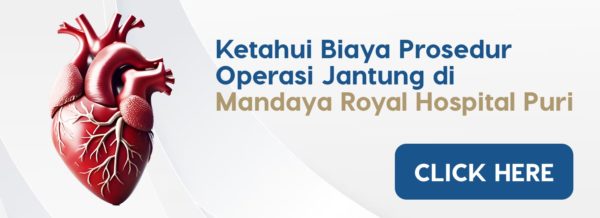Arrhythmia or heart rhythm disorders cause the heart to beat too fast, too slow, or irregularly. This condition disrupts the process of pumping blood throughout the body. As a result, a person may become easily fatigued, frequently faint, experience shortness of breath, dizziness, or even death. So, can heart arrhythmia be cured, even without treatment?
Contents
Can Heart Arrhythmia Be Cured?
Arrhythmia is caused by problems with the electrical signals that instruct the heart to beat. These electrical signal disturbances in the heart are not always due to serious health conditions.
Arrhythmia can often be cured. In fact, some cases may not require special treatment. For example, arrhythmia caused by excessive physical activity will resolve quickly on its own once you rest.
However, arrhythmias that cause symptoms or pose a risk of complications may require more serious treatment. The type of treatment provided will depend on the cause and severity of the condition.
Treatment Options for Arrhythmia
According to dr. Sebastian Andi Manurung, Sp.JP (K), a cardiologist from Mandaya Royal Puri Hospital, most arrhythmias can be cured with certain therapies. Some commonly recommended arrhythmia treatments include:
1. Medications
Medications are the first therapy used for various conditions. The doctor will prescribe antiarrhythmic drugs depending on the type of arrhythmia experienced. If the medications do not work as expected, the doctor may try other procedures.
2. Cardioversion
Cardioversion is a non-surgical therapy to treat arrhythmia. This procedure involves sending an electric shock through electrodes placed on the patient’s chest to restore the heart’s rhythm.
3. Catheter Ablation
dr. Sebastian Andi Manurung, Sp.JP (K), recommends catheter ablation for patients with tachycardia-type arrhythmia (heart rate above 100 beats per minute). The procedure involves slightly damaging heart tissue with heat or cold energy to block the disruptive electrical signals.
4. Pacemaker Installation
To treat bradycardia-type arrhythmia (heart rate below 60 beats per minute), the doctor may recommend installing a pacemaker. Currently, there are two types of pacemakers used: conventional with wires or wireless (leadless pacemaker). The leadless pacemaker is a more modern technology with a smaller device.
5. Implantable Cardioverter-Defibrillator (ICD) Installation
The ICD installation procedure is performed under the skin near the collarbone. This device checks the heart’s rhythm and delivers an electric shock if the heart rate becomes irregular.
6. MAZE Procedure
The MAZE procedure is also a method to treat arrhythmia. This procedure involves making small incisions in the upper part of the heart to create a scar tissue pattern resembling a maze. This scar tissue will block the electrical signals in the heart that cause a too-fast heartbeat.
Causes and Symptoms of Arrhythmia
Arrhythmia occurs because the electrical impulses that regulate the heartbeat do not function properly. Not always due to health problems, the following are some causes of arrhythmia:
- Excessive stress
- Heavy physical activity
- Lack of sleep
- Diabetes
- Hypertension
- Thyroid disorders
- Electrolyte imbalance
- Congenital heart disease
- Heart valve disorders
- Smoking habits
- Certain medications
Arrhythmia is often categorized into two types based on the speed of the heartbeat: tachycardia (heart rate above 100 beats per minute) and bradycardia (heart rate below 60 beats per minute).
Some symptoms you may experience if you have arrhythmia include:
- Heartbeat too fast or too slow
- Frequent dizziness
- Sudden fainting
- Feeling easily fatigued during activities
- Shortness of breath
- Chest pain
These symptoms may not fully indicate arrhythmia. Therefore, a more comprehensive examination by a Cardiologist is very important.
Permanent Wireless Pacemaker Installation Procedure
Previously, pacemaker installation might worry patients because the device was quite large and used wires inside blood vessels. However, the advent of the permanent wireless pacemaker (leadless pacemaker) offers ease and comfort to patients.
The leadless pacemaker is very small, measuring 25.9mm and weighing only 2 grams. It is more compact and can be implanted inside the heart.
This device is shaped like a bullet and functions as a generator that delivers electricity to the heart muscle.
Another advantage of the wireless pacemaker is its simple installation, done through the femoral vein using a transcatheter without surgery. This way, patients will not have large scars or bumps on their chest as seen with conventional pacemaker installations.
Like conventional pacemakers, the wireless pacemaker battery can last 10-12 years. Additionally, some advantages of wireless pacemaker installation include:
- A shorter procedure time compared to conventional pacemaker installation (about 30 minutes or depending on the patient’s condition)
- Small scar
- Low risk of complications
- Short hospital stay (only 1 day)
- Ability to return to normal activities more quickly without movement restrictions around the chest
About the Cardiology Center for Children & Adults at Mandaya Royal Hospital Puri
The Cardiology Center at Mandaya Royal Hospital Puri consists of leading cardiologists in Indonesia. With complete medical equipment and supported by 15 Cardiologists, each with specific expertise, you will be treated by a team. Comprehensive heart examinations will be conducted to identify the root of your heart health problems.
If you experience heart rhythm disturbances (Arrhythmia) with the symptoms mentioned above, immediately consult and undergo a thorough examination with Arrhythmia Consultant Cardiologist dr. Sebastian Andi Manurung, Sp.JP (K), at the Cardiology Center of Mandaya Royal Hospital Puri.
You can book a doctor’s appointment via WhatsApp Chat, the Book Appointment page, or through the Care Dokter application. You can download it on Google Play and the App Store. In addition to booking an appointment, you can also monitor queue numbers and obtain other complete information there.




